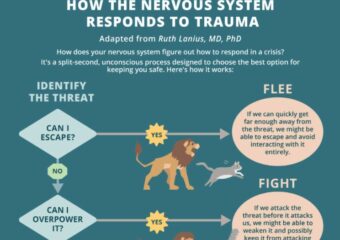It can often be difficult for trauma survivors to understand how or why they reacted a certain way during a traumatic experience. Instead of seeing their trauma response as the result of a split-second, unconscious decision made by their nervous system, your client may blame themself for not reacting differently. This can be especially true […]
Helping Clients Expand Their Comfort Zone
When it comes to treating anxiety, clients sometimes focus more on final outcomes than progress. But working with anxiety is often a daily process – a series of gradual (and often uncomfortable) steps to widen their comfort zone. So how can we motivate clients to embrace this process? In the video below, Kelly McGonigal, PhD […]
Working with Self-Harm: Pat Ogden, PhD with a Safe Replacement for Harmful Actions
In the aftermath of trauma, some clients turn to self-harm to relieve intense feelings of shame, anxiety, or even emotional numbness. Over time, these harmful behaviors can become addictive – and helping clients break that cycle can be a challenging process. So in the video below, Pat Ogden, PhD explains how she helps clients gain […]
When Racism Triggers Emotional Reactivity
For many clients, racism can be a deeply emotional topic. The experience of racism (and the scenes of racial injustice that occur far too often) can trigger a wave of painful emotions that threaten to shift clients into a state of reactivity and overwhelm. Shelly Harrell, PhD worked with a client who found herself in […]
A Body-Based Approach to Managing Difficult Emotions
When clients have a low threshold for tolerating difficult emotions, their lives can become extremely limited. Instead of working through the challenges that can lead to new opportunities, they may choose to stay with the relative “safety” of what they know – even if it’s dysfunctional. So in the video below, Bonnie Goldstein, PhD, walks […]




